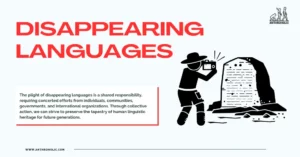AI Answer Evaluation Platform Live Now. Try Free Answer Evaluation Now
Branches of Anthropology
Anthropology studies the origins and development of human cultures and civilizations. The idea of culture covers social structures, organizations, languages, religious rituals, and material goods. Anthropologists employ a number of methodologies to analyze the features of both ancient and modern human groups. They achieve this by digging into and highlighting the different lifestyles of ancient residents of our planet.

Anthropologists make an attempt to undertake in-depth, impartial research on and communicate about people. They glance around and pay attention to others in an effort to achieve this. Then, anthropologists employ a method called ethnography to document interactions and activities. Participating in the normal activities of their subjects helps anthropologists to more completely grasp and communicate the meaning underlying local institutions, practices, and traditions. “Participant observation” is the term given to this method.
When examining tribes and civilizations that are distinct from their own, anthropologists must make sure their discoveries are unbiased and free of prejudice. This prejudice is an example of ethnocentrism, which is the propensity to assess all groups badly in contrast to another, often their own, cultural group.
The numerous academic fields that make up anthropology may be classified into four major subdisciplines. A subdiscipline is a more concentrated area of study within a bigger topic or subject. Archaeology, biological or physical anthropology, linguistic anthropology, cultural or social anthropology, and other areas are among the various specialties accessible to anthropologists. Academics typically do not regard subdisciplines as autonomous, even though there may be overlap between them; nonetheless, they all often utilize distinct methodologies and approaches.
Branches of Anthropology
During our stay on Earth, we engage and respond to other beings that exist with us. But have you ever wondered what defining attributes motivate us to accomplish this and set us apart from other living creatures?
The genesis and development of human civilizations and cultures is the crucial aspect of anthropology. People’s learned behaviors, including their languages, belief systems, social structures, organizations, and material possessions, are referred to as culture. Through various methods, anthropologists investigate the traits of historical and present human populations. They achieve this by looking into and describing the historical lifestyles of different people worldwide.
The varied study areas within anthropology are typically divided into four subdisciplines. A subdiscipline is a specific study area within a more prominent subject or discipline. For example, anthropologists specialize in archaeology, biological or physical anthropology, linguistic anthropology, cultural or social anthropology, and so on. Although some subdisciplines can overlap and are not usually recognized as separate by researchers, they frequently employ unique approaches and strategies.
The study of how diverse ethnic groups have evolved to live in certain surroundings is called cultural anthropology, commonly referred to as social anthropology.. To analyze various cultures and behaviors, cultural anthropologists base every ethnographic research study on participant observation and fieldwork.
Lindsey, a National Geographic Fellow in Anthropology Catherine Kapu’uwailani The palu, a tribe of Micronesian navigators who don’t employ technology or charts, have distinctive and increasingly diminishing navigating skills.
Ethnologists utilize cultural anthropology as a tool to analyze and compare various civilizations.. Ethnologists may look at the reasons that lead to these variances and the processes that result in distinct conduct in various cultural situations.
Wade Davis, a National Geographic resident explorer and specialist in ethnobotany, He went across Latin America for more than three years, collecting and investigating the plants that varied indigenous societies employ on a daily basis. His work focuses on how various cultures understand and utilize plants in connection to significant culinary, medical, and religious activities.
Social and Cultural Anthropology
The main branch of anthropology that describes culture in its varied facets is called cultural anthropology. It is based on the gathering, evaluation, and justification (or interpretation) of the primary information from extended ethnographic fieldwork. In addition, based on their culture, the concepts and actual surroundings are also assessed.
The fundamental insight can be made by examining the skills people employ to fit in with society and how they live their lives as they do. The significance of the cultural system in people’s lives is greatly influenced by ideology and conduct.
This field of study has long cast a wide net and included a variety of methodologies, both in America and Europe. Culture and personality studies, culture history, cultural ecology, cultural materialism, ethnohistory, and historical anthropology are only a few of the ancillary methodologies it has given rise to. These disciplines use a variety of scientific and humanistic methods. A set of processes focused on culture has emerged as cultural anthropology.
Linguistic Anthropology
The study of how language affects social life is known as linguistic anthropology. According to linguists and anthropologists, language gives individuals the mental means to reason and act in the world. Therefore, linguistic anthropologists study how language affects social networks, cultural beliefs, and people’s perceptions of themselves and their surroundings.
According to linguistic anthropologists, the uniquely human ability for language is a crucial process by which humans build culture and social life. This talent allows people to produce verbal and written material. However, they emphasize the analysis of audio or video recordings of “socially occurring” discourse—that is, talk and text that would appear in a community whether or not the anthropologist was present. Today’s scholars in the field use various methods to investigate how this creation is accomplished.
Linguistic anthropology investigates how language affects social interaction.. According to linguistic anthropologists, language supplies humans with the mental skills required to observe and interact with the outside world. Linguistic anthropologists think that language has an impact on a civilization’s social institutions, cultural beliefs, and environmental knowledge.
In order to obtain a better understanding of how humans use language for social and cultural objectives, linguistic anthropologists pay careful attention to what people say when engaged in everyday social activities. This information was acquired utilizing a number of approaches, including participant observation, participant interviews, and videotaping.
Cognitive scientist Lera Boroditsky analyzes the communication patterns of the Pormpuraaw, an Australian Aboriginal community. The backdrop for nearly all meetings and disputes was the cardinal directions, according to Boroditsky. In Pormpuraaw, people commonly exchange “Where are you going?” queries. The phrase “a vast way to the south-southwest” can be one of the replies. You may terrify someone by informing them, “There’s a snake at your northwest foot.” Because of this language, the Pormpuraaw can traverse their surroundings with remarkable accuracy, but it is rather difficult for outsiders to talk with them if they do not know the cardinal directions.
Linguists and anthropologists may be able to document extinct native languages. National Geographic’s Enduring Voices Project organized trips to record endangered languages in text, picture, and sound in an attempt to preserve their languages. According to the program, money was also granted for activities aimed at maintaining and restoring indigenous languages.
Biological Anthropology
The study of the evolution of people and their extant and extinct ancestors are known as biological anthropology, commonly referred to as physical anthropology. Biological anthropology situates human development in the context of human culture and behavior. To understand the diversity of human forms, our genetic ancestry, and how we survive and reproduce, biological anthropologists look for answers.
Humans have long been attracted by biological developments, which have advanced to unprecedented heights. Understanding human nature and, eventually, the development of the brain and nervous system is the goal of biological anthropology. As a result, biological anthropologists study the connections between historical social and cultural practices and physical processes, such as alterations to our skeletal structure or genetic makeup.
The study of how humans and their living and extinct ancestors have formed is known as biological anthropology, also referred to as physical anthropology. Biological anthropology is the study of how culture and behavior have affected human evolution. Therefore, biological anthropologists focus on the links between physical events, including changes to our genetic composition or bone structure, and established social and cultural patterns.
In an effort to understand how humans arose from other living species, some biological anthropologists analyze primates, such as monkeys and apes. We think that primates are the closest living cousins of humans. Investigating the differences and similarities between humans and the “great apes” is one of biological anthropology’s key aims.
One of Goodall’s most notable discoveries was that chimpanzees employ basic tools like sticks.The development of tools is seen as a crucial turning point in the history of humanity.. According to biological anthropologists, our ancestors’ dependency on toolmaking had an influence on the development of the current human hand, which has a larger thumb and stronger gripping muscles.
Other scientists analyze our predecessors’ skeletal remains to learn how humans have developed through time to suit diverse social and environmental contexts. Prehistoric humans are the topic of paleoanthropology.
Zeresenay Alemseged, a National Geographic Explorer, is researching the petrified human bones unearthed at the Busidima-Dikika archaeological site in Ethiopia. Numerous early hominid species that lived three to four million years ago were validated by Alemseged’s study. Paleoanthropologists examine why some hominid species persisted for tens of thousands of years while others disappeared.
The major emphasis of biological anthropology may be the link between a person’s biological make-up and their social or cultural behavior. For instance, the Ju/’hoansi, a foraging tribe in Namibia, have peculiar physical traits as a consequence of the bad environment and lack of high-calorie foods. At night, a thick layer of fat covers the primary organs of the chest and belly, causing veins to constrict. As a consequence of their reduced heat loss, the Ju and Hoansi maintain regular body temperatures.
Archaeological Anthropology
A million years have passed since the evolution and development of humanity. The study of the past of civilization using physical remains is called archaeology. Any item made, altered, or used by people can be included in these remains. Archaeologists carefully unearthed and analyzed these to interpret historical peoples’ experiences and behaviors.
Archaeologists examine the artifacts discovered during excavations and conclude them. Thanks to the soil and artifacts, they can readily evaluate and interpret the data.
Individual practice is aided by history and the physical environment, and logical conclusions are founded on the results.
The study of human history via the discovery of ancient artifacts is known as archaeology. Anything manufactured, changed, or used by humans could qualify as one of these artifacts. In order to give insight on the historical interactions and activities of people and civilizations, archaeologists actively seek out and thoroughly investigate these artifacts.
Archaeologists frequently concentrate their studies on a specific period. Ancient societies—societies that existed before writing was invented—may be the object of archaeological investigation. The only way to recreate the traditions of ancient societies is to grasp the objects they left behind; hence, these studies are vital. For instance, the recovery of macaw bone pieces, ceramic representations, and eggshells at those archeological sites illustrates how significant macaws were to the ancient people who lived in the Southwest area of the United States as exotic trade items and sacred artifacts.
Some archaeologists chose to concentrate their study on just one single civilization or historical period. High-altitude archaeologist Constanza Ceruti, a National Geographic Emerging Explorer, is drawn to the goods and characteristics of the Incan Empire.. Ceruti explores historical documents, indigenous Andean beliefs, and archaeological finds in addition to these new sources. With this information, she was able to reproduce the aesthetic appeal of ancient buildings, the symbolic value of particular artifacts, and components of rituals.
Conclusion
The study of anthropology has always reflected how our interactions with other people and cultures have changed over time. These connections are closely related to history’s political, economic, and social forces. Today Modern anthropologists can now find and examine more sophisticated data about peoples and cultures thanks to new technologies and developing academic departments.




